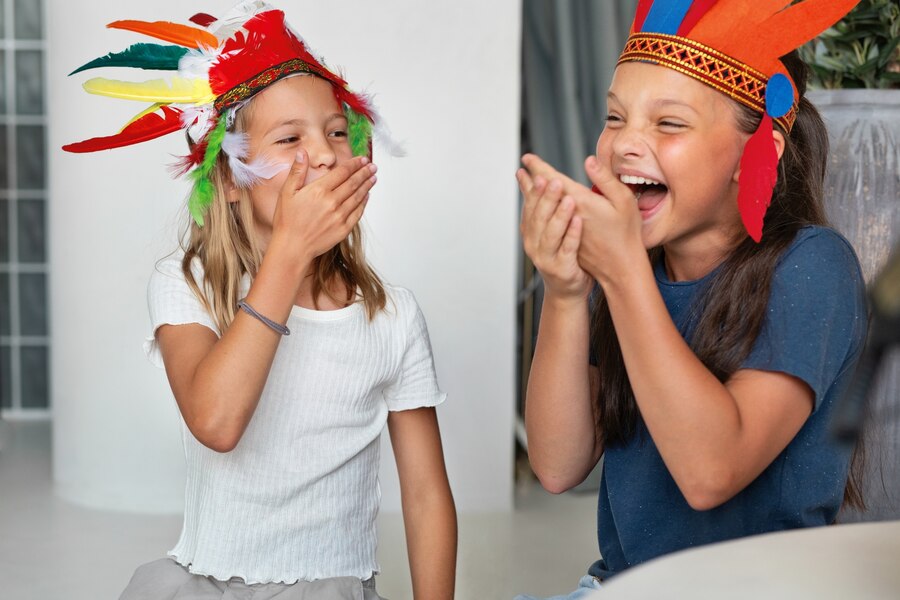Mesoamerica costume ideas for homeschool festival are an amazing way to bring learning to life, and what better way to immerse your children in the richness of a culture than through its clothing? Mesoamerican civilizations, like the Aztecs, Mayans, and Olmecs, hold a treasure trove of history and tradition that can provide unique inspiration for costumes.
If you’re looking for Mesoamerican costume ideas for your homeschool festival, this post will guide you through understanding their traditional garments, creating stunning costume designs, and incorporating the educational value of this cultural exploration into your homeschool routine.
Understanding Mesoamerican Costumes
What Were Traditional Mesoamerican Garments?
Mesoamerican cultures were as diverse as they were rich in tradition, with unique garments that reflected social, spiritual, and functional aspects of their lives. Here are some standout elements:
- Aztec Clothing: Aztec noblemen (and women) dressed in vibrantly colored fabrics made from cotton and adorned with featherwork. The maxtlatl (loincloth) and tilmatli (cloak) were staples for men, while women wore huipils (blouses) and long skirts.
- Mayan Costumes: Mayan attire emphasized natural fibers and intricate embroidery. Men wore a simple loincloth, while women wore flowing huipils or cortes (skirts). Jewelry crafted from jade and stones was common.
- Olmec Influence: Being one of the earliest known Mesoamerican cultures, Olmec attire was more rudimentary but still included distinctive headdresses and artistic adornments.
These traditional garments were more than just clothing—they symbolized social status, religious affiliations, and even cosmic beliefs mesoamerica costume ideas for homeschool festival.
Sourcing or Creating Authentic Costumes
To replicate these costumes, here are a few tips:
- DIY Approach: Use cotton or linen fabric to make garments that resemble ancient styles. Search online for sewing patterns for huipils or tilmatlis, or create no-sew versions using draped fabric and safety pins.
- Thrift Search: Many thrift stores carry scarves, fabric pieces, or clothing that can be adapted into Mesoamerican designs.
- Pre-Made Options: If you’re short on time, consider online shops that sell cultural attire or costume props. Be sure to prioritize sources that respect and honor cultural authenticity.
Practical Mesoamerican Costume Ideas
Need some inspiration? Here are a few detailed costume ideas based on Mesoamerican cultures:
1. Aztec Warrior Costume
- Core Outfit: Start with a loincloth (maxtlatl) paired with a tilmatli cloak.
- Accessories: Add a feathered headdress (a hallmark of warriors) and mock obsidian weapon props.
- Extra Touch: Paint faces with traditional Aztec markings using skin-safe paint to enhance the effect.
2. Mayan Noblewoman
- Core Outfit: A beautifully embroidered huipil or a long white dress with colorful designs.
- Accessories: Include jade-like necklaces (look for green faux stones) and bracelets.
- Extra Touch: Include a woven belt to tie the outfit together.
3. Olmec Headdress and Simple Tunic
- Core Outfit: A basic tunic made of neutral fabric.
- Accessories: Create a foam replica of an Olmec helmet or headdress and carry small clay figurines as props.
- Extra Touch: Use earthy-colored paints to mimic body adornments observed in Olmec artwork.
4. Tlaloc (Rain God) Inspired Look
- Core Outfit: A brightly colored tunic in blue and green to represent water and fertility.
- Accessories: Add a staff, a crown decorated with cloud-shaped patterns, and bold face paint inspired by Tlaloc’s imagery in codices.
5. Mesoamerican Farmer
- Core Outfit: A simple loincloth or skirt with a plain tunic.
- Accessories: Carry props like maize or small farming tools as a nod to Mesoamerican agricultural roots.
- Extra Touch: Add a straw hat crafted from woven paper or cloth to enhance authenticity.
These costumes are perfect for showcasing the range of Mesoamerican culture while remaining practical for homeschool festivals.
The Educational Value of Mesoamerican Costumes
Why Incorporate Costumes into Learning?
Bringing Mesoamerican culture to life through costumes delivers both a hands-on activity and an immersive educational experience.
- Interactive History:
Each costume tells a story. While crafting or selecting outfits, you can incorporate lessons on topics like the daily lives of Mayans, the significance of Aztec deities, or the emergence of Olmec civilization.
- Geography Connection:
Use maps to identify regions where these cultures thrived, helping students understand the connection between clothing and environment (e.g., materials suitable for warm climates).
- Cultural Respect:
Discuss the deeper meanings behind garments and symbols. Highlight the importance of cultural appreciation versus appropriation to instill respect for diversity.
Ideas for Integrating Learning Activities
- Write a Report:
Ask students to research a specific garment or cultural symbol and write a brief report on it.
- Presentations:
Have children showcase their costumes and share what they learned about the culture they represent.
- Cooking Integration:
Tie in cultural cuisine by preparing Mesoamerican-inspired dishes like tamales, pozole, or cacao drinks during the festival.
Building Connections through Community Engagement
A homeschool Mesoamerican festival becomes even more enriching when treated as a collaborative event.
- Partner with Cultural Groups:
Reach out to local cultural organizations for guest speakers or materials, ensuring an authentic representation of Mesoamerican heritage.
- Host a Mini Festival:
Gather your homeschool community to organize a Mesoamerican-themed day, with costume presentations, food, and games inspired by the cultures.
- Share Your Journey:
Use social media or homeschool networks to share your costume creations and learning activities. Encourage others to join by showcasing how fun and educational this exploration can be.
Bring Culture to Life in Your Homeschool
Introducing Mesoamerican culture through costumes for your homeschool festival is a rewarding experience for the entire family. It combines creativity with a rich educational opportunity, all while encouraging a deeper appreciation for history and diversity.


